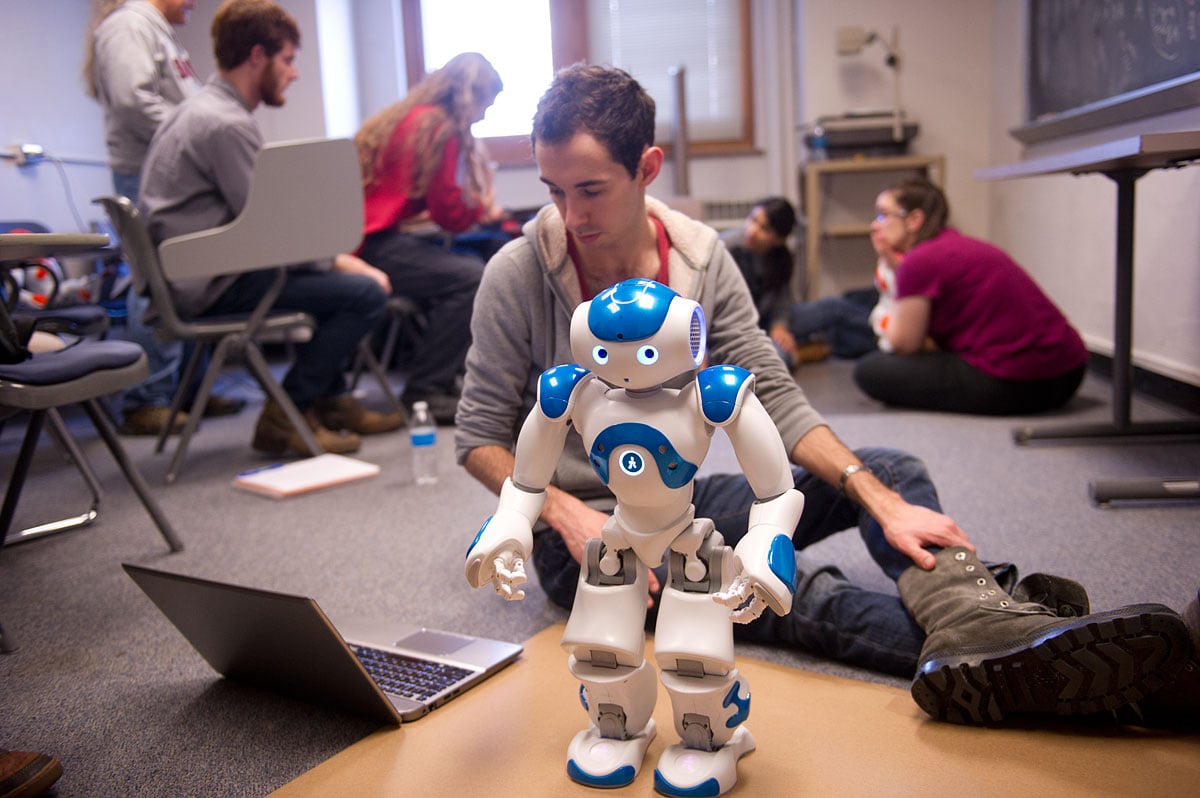By Shawn Mack
 Photo source: https://www.pexels.com/photo/person-writing-on-notebook-4145190/
Photo source: https://www.pexels.com/photo/person-writing-on-notebook-4145190/
About 65 percent of students today will engage in an occupation that does not yet exist. Yes, that’s correct. At least, according to this survey conducted by the World Economic Forum.
The very findings depict the effect of rapid change in the learning modules. Modern approaches towards educating the children and the increasing integration of technology will soon bring forth subjects that haven’t yet had our attention. Thus, introducing newer fields with time.
And well, to put it straight, this is only one of the many outcomes that integration of tech into education may bring in the future. There may be several more.
But to truly know the possible potential of these outcomes and their respective impact, we need to study the process in detail. We need to know how exactly technology is shaping the future of education. Let’s look into it.
Making Devices an Essential
One of the most obvious impacts of technology on current and upcoming educational developments is the excessive integration, physically and practically. Today, we witness increased use of devices in every other extra-curricular activity. Usually, management provides one laptop or tablet per group. However, in the future, we believe, the ratio of devices in a class will come to 1:1. And probably, for the better.
There are software and apps like Dreambox and ST Math that make learning Maths easier. The same applies to other subjects. For example, learning programs and languages is becoming easier with Red Ink and Newsela. Similarly, technology is also making class management easier for the teaching staff with apps like Quizlet.
Ensuring Efficient Assessment with AI
With the diversity with which the educational sector is progressing, it is becoming difficult to arrange skilled educators and tutors for all fields on a one-to-one basis. For this very reason, eventually, we may see Artificial Intelligence not only interfering but assuming responsibility in the educational sector. In current times, we can observe a close example of this expected future in the form of Education Dominance, which is an AI-based tutoring system. Perhaps, this mode of education will eventually make assessment much more efficient as well. Bots can eliminate the possibility of human error, analyzing submitted data with maximum accuracy.
Modifying Education Modules
Previously, the world focused more on delivering the knowledge of the skill. Say there’s a complex math problem. Now, all the students in the class were taught at the same pace using the same book to address this problem effectively. Naturally, since every child has a different absorbance capacity, some excelled while some lagged.
Technology seems to be effectively addressing this issue and promising a more productive future. With the normalization of adaptive learning software, generalized textbooks are getting replaced with customized computer programs. These programs individually address the needs of each child in synchronization with their learning pace. Thus, eradicating the time-factor in acquiring knowledge and maximizing the quality-factor.
Simultaneously, it is also bringing a noteworthy and positive change in educational modules. Educators are focusing on teaching students how to learn rather than what to learn. With Google and other resources available all the time, data-learning has become easier, while computing, understanding, and evaluation skills still demand attention.
Promoting Group-oriented Learning
Well, group-oriented learning is also another notable change that we expect to observe owing to the excessive use of technology. Currently, we observe that technology is downsizing classrooms, setting boundaries between like-skilled students. Or perhaps, grouping them within the same classrooms, providing collective but relevant growth for a few and a diverse growth on the whole. This entire practice brings about an increased sense of responsibility and ownership amongst students. Their respective tailor-made, tech-optimized modes of learning encourage them to engage more with one another and individually with their learning process.
Plus, when grouped, they work together as a team, supporting one another. For classrooms, we observe increased practical assistance. Be it in terms of tech or physical assistance with activities, which negates the proposed negative impact of technology, i.e., reducing human interaction. At homes, or when apart, their constant connection through team chat apps, or the whole classroom’s connection via chat apps, brings about a sense of command and responsibility.
A Balance is Necessary
As we saw earlier, technology is surely promising a productive future, especially in the educational sector. Advancements in the technological world and the integration of these advancements in classrooms is surely guaranteeing a highly literate future.
However, we must not forget the possible negative impacts of excessive usage. Even today, the negative impact of excessive screen time is a commonly known phenomenon. Plus, excessive integration may make us too dependent on the tech stuff, which may negatively impact our mental and physical capabilities. Thus, even as we look forward to furthering the incorporation of tech into education, we must keep a check on maintaining balance.
Discover more about Technology with RobotLAB!

Author Bio:
 Shawn Mack is a content writer who offers ghostwriting, copy-writing, and blogging services.His educational background in business and technical field has given him a broad base from which to approach many topics. He is also fond of writing interesting articles on technology & digital marketing related topics.
Shawn Mack is a content writer who offers ghostwriting, copy-writing, and blogging services.His educational background in business and technical field has given him a broad base from which to approach many topics. He is also fond of writing interesting articles on technology & digital marketing related topics.


